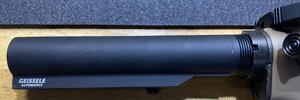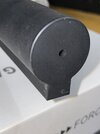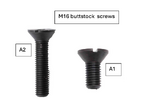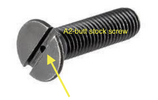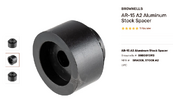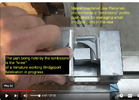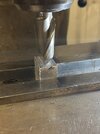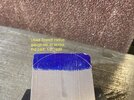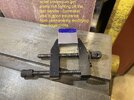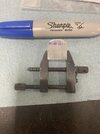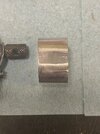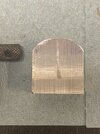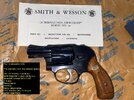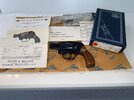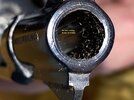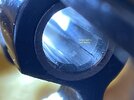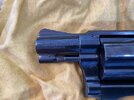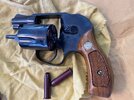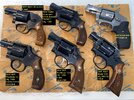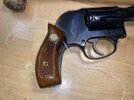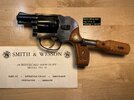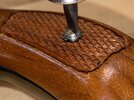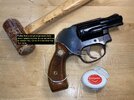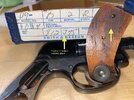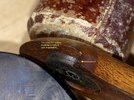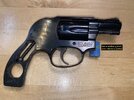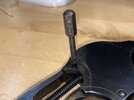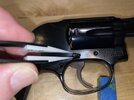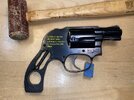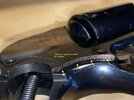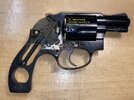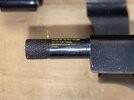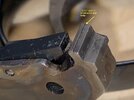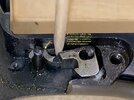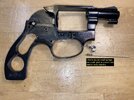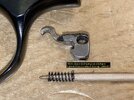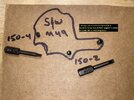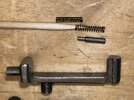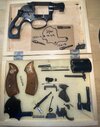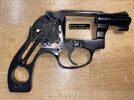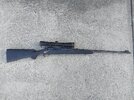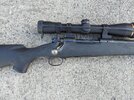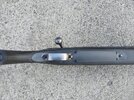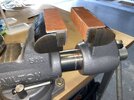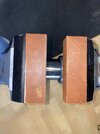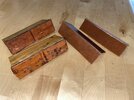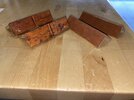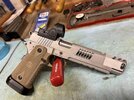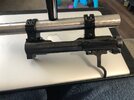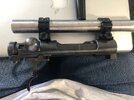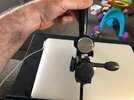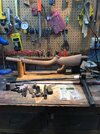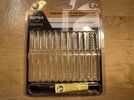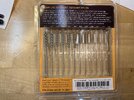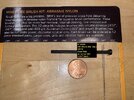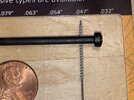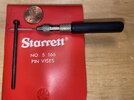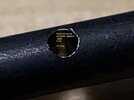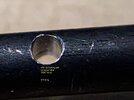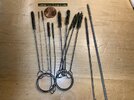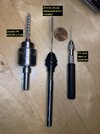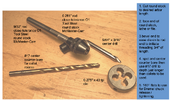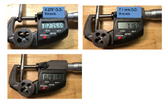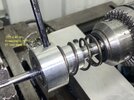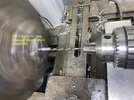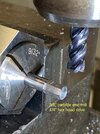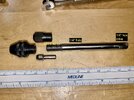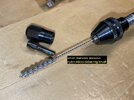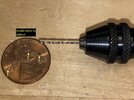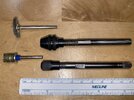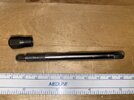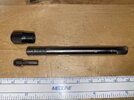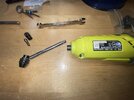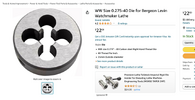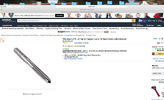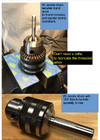the m70 synthetic stock for my sg has a length of pull just a hair over 14", I was going to just put a 1/2 pad on it but I decided to cut 1/2 of the stock off to. I prefer stocks not to be over 13.5" so even if I use a 1" pad again I'll be at 13.5 at most, for hunting in the cold 13 or 13 1/4 is preferred. I used my calipers and set to 1/2 and scribed a line around the butt, then used the calipers to make a trench that works like a knife wall for when I cut the butt off. I really need to pickup a nice thin Japanese pull saw someday for jobs like this, I ended up using a tenet saw which isn't preferred but worked. The shadow line I scratched in helps keep the edges nice and square.
Luckily the plastic molding for the screw threads where over 1 inch into the but but the heal thread hole was cracked inside, I drilled that one about 3/8"deep with a 3/8" drill and filled with jb weld along with all the edges and the toe as well. Some johnsons paste wax on the butt pad, I used a drill bit that was the miner diameter of the screw with some paste. That bit helped make sure the new hole would be lined up perfectly, screwd in the toe screw the slid the brill bit shank into the top heal screw hole. Worked out perfect, lop is now exactly 13.5" I do have a limbsaver 1" pad I could fit if I don't get a 1/2 pad. At the toe of the old pad there's now a little lip but that should sand down if I keep it on there.
Picked up some rustoleum camo paint from Walmart yesterday, got khaki, deep forest green, flat black, and espresso, they didn't have any of the dark brown camo paint but the espresso looks near the same. Got a can of rustoleum matte clear I'll give a few coats after it's camoed. Still have to decide what colors and what order of coverage I want. I'll probably paint the hole stock in black inside and out to cover up all the bedding and work done.


